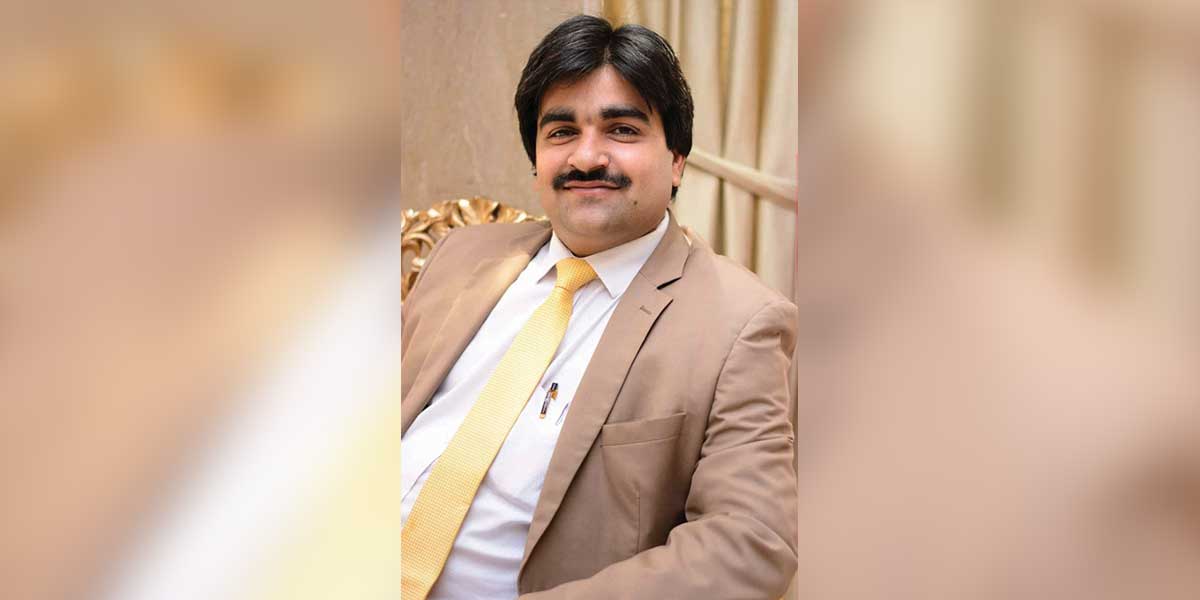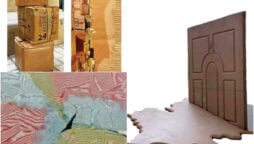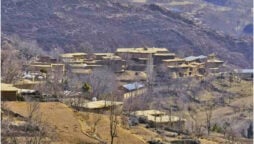Synopsis
A large chunk of the tobacco industry in Pakistan is made up of international companies says Khalil Ahmed

Khalil Ahmed is a programme manager at the Society for the Protection of the Rights of the Child (SPARC). At the organisation, Ahmed routinely voices the impact of smoking on society, the economy and public health. In collaboration with other activists working on campaigns for the protection of children’s rights, he has advocated for the need to tax tobacco-related products. Together, they have launched a report titled ‘Big Tobacco: Tiny Targets’, in the presence of policymakers, civil society activists and the media.
Answering questions put forward by Bol News he replied:
What is the current tobacco smoking status in Pakistan? What are the national statistics for different age groups and gender (kindly mention your source)?
In Pakistan, the number of smokers has reached up to 29 million. About 1,200 children between the ages of 6-15 years start smoking every day (Tobacco Control Cell Factsheet).
The average age of smoking initiation is 18.7 years old; 15.3 per cent began smoking when they were younger than 15 years and 13.7pc began smoking when they were 15-16 years old.
Moreover, 19.1pc of adults (age 15+) currently use tobacco in any form (men 31.8pc; women 5.8pc), 12.4pc of adults smoke tobacco, 7.7pc use smokeless tobacco. Among youth (ages 13-15), 10.7pc use any tobacco product (boys 13.3pc; girls 6.6pc), 7.2pc smoke tobacco, and 5.3pc use smokeless tobacco. Among youth who have ever smoked, nearly 40pc first tried a cigarette before age 10.
What are the tobacco industry statistics? How much is produced daily/annually? How much is sold and how much is consumed daily/annually?
A large chunk of tobacco industry in Pakistan is made up of international companies. The Pakistan Tobacco Company (subsidiary of British American Tobacco) holds 71pc share of the retail market whereas Philip Morris International holds 20pc as of 2018. Pakistan is the eight largest tobacco producer in the world.
On average, how many tobacco products are smoked per day?
Tobacco smoking in Pakistan is legal, but under certain circumstances it is banned. If calculated on a per day basis, 177 million cigarettes per day were consumed in FY-14.
What is Pakistan’s tobacco industry like? What do local producers do to maintain cigarette sales? What marketing tactics have they used in Pakistan?
The tobacco industry in Pakistan regularly interferes in public policy regarding tobacco control. Some of the examples include lobbying against larger pictorial health warnings, CSR activities directly through government officials and lobbying for acceptance/promotion of alternative tobacco products.
Each year, 25pc of Pakistani smokers try to quit smoking but only 3pc of them succeed.
Has passive smoking increased or is it the same in Pakistan?
The second-hand smoke is a combination of smoke from the burning end of a cigarette and the smoke breathed out by smokers. Second-hand smoke contains more than 7,000 chemicals. Hundreds are toxic and about 70 can cause cancer.
Research was conducted in June 2007 by the medical students and employees of Ziauddin Medical University, Karachi. A questionnaire was administered regarding environmental and health history, smoking status, and passive exposure of the participants to smoking at home, workplace, and transport (public and private). The questionnaire was made according to the guidelines of the World Health Organization (WHO).
According to the research, passive exposure to cigarette smoke is seen more in students as compared to faculty and staff so it is essential to create awareness both in health professionals and common people to prevent them from hazards of passive smoking.
Other figures of second-hand smoking.
- 72.5pc of adults (16.8m people) who work indoors are exposed to tobacco smoke at the workplace.
- 86pc of adults who visited restaurants in 2014 (49.2m people) were exposed to second-hand smoke, and 76.2pc of adults who used public transport were exposed to second-hand smoke.
- 37.8pc of youth (ages 13-15) are exposed to second-hand smoke in public places, while 21pc of youth are exposed to second-hand smoke at their homes.
Is passive smoking more dangerous? Or is active smoking still the main problem?
Passive smoking is more dangerous because the smoke that people inhale from second-hand smoke has no filter and we unknowingly inhale all the harmful chemicals that the cigarette contains. The longer the duration and the higher the level of exposure to second-hand smoke, the greater the risk of developing lung cancer.
Non-smokers who are exposed to second-hand smoke at home or work increase their risk of developing lung cancer by 20-30pc.
What are the alternatives to smoking and their statistics? Are more people going for alternatives to smoking?
[A particular] nicotine patch … is a hot-selling brand in Pakistan. An extravagant launch party was held in Karachi to promote the product using celebrities. Since its launch, the product has been marketed as an ‘essential Item’ (mentioned on the website as well). To further promote the brand, an online music show … has been launched that features some of the top and highest paid musicians of Pakistan. It is noticeable that songs from this show are available for download at the online tobacco selling website.
E-cigarettes and vapes are being sold as alternatives to cigarettes as there is no specific law in Pakistan that allows or forbids e-cigarettes and vaping. The online companies are using false advertisement to sell their products.
The tobacco industry is also seeking regulation to introduce the IQOS in Pakistan. The tobacco sticks that can be used with IQOS are already being sold online in Pakistan.
What are some good solutions for smokers to stop smoking? What can their family, friends and colleagues do to help?
The nicotine replacement therapy can curb the urge to smoke. Prescription pills can curb cravings and may also make smoking less satisfying. Try and try again several times before giving up cigarettes for good. Behavioural therapy is a type of counselling that helps an individual identify and stick to quit-smoking strategies.
Family, friends, and colleagues can motivate a smoker and give a powerful, personal reason to quit. It may be to protect family from second-hand smoke. Or lower the chance of getting lung cancer, heart disease, or other hazards. Or to look and feel younger even.
What is the ‘replacement smoker’ problem in Pakistan?
The tobacco industry perceives young children as their replacement smokers. They use enticing flavours, colourful packaging, and names and logos similar to popular types of candy. In Pakistan many of these products are often placed in kid-friendly locations in convenience stores, often near candy, and sold at kid-friendly prices to attract more children. The tobacco industry also promotes its products on social media and advertises in magazines and direct mail.
What is the cigarette tax problem in Pakistan?
The Tobacconomics Cigarette Tax Scorecard scored Pakistan 0.88/5 points. It is one of the lowest-scoring countries in the world and thus its cigarette tax system needs much improvement. In 2020, Pakistan did not impose federal excise duty and withdrew advance tax on the tobacco growers, which helped increase exports of tobacco.
There are two laws that we know of: Cigarettes (Printing of Warning) Ordinance, 1979 and Prohibition of Smoking in Enclosed Places and Protection of Non-smokers Health Ordinance, 2002. Are these laws obsolete and redundant? Do you propose any changes to these laws?
After the 18th Amendment, health has become a provincial subject and therefore it is the dire need that all provinces and ICT do legislations on tobacco control and bring Cigarettes (Printing of Warning) Ordinance, 1979 and Prohibition of Smoking in Enclosed Places and Protection of Non-smokers Health Ordinance, 2002, in compliance with WHO’s Framework Convention on Tobacco Control.
What other additional laws do you propose that can reduce the smoking problem?
Anti-tobacco activists propose at least three additional laws to curb this menace.
- Law on plain packaging.
- Legislation to ensure that public officials aren’t involved with tobacco industry and all engagements are duly reported.
- Legislation to make tobacco industry accountable to share accurate figures about production, sale, marketing, research, CSR and lobbying.
Are there any key policy events during 2022? Any key actions in Pakistan against tobacco in 2022? Please name the organisations contributing to this.
Policy events are planned with key officials including the Ministry of Health, and the Ministry of Finance for effective tobacco taxation and sustainable tobacco control policies. Consultation sessions, sensitization sessions, advocacy etc. These will be conducted against the tobacco-related products and organisations such as SPARC, Chromatic, PANAH, Indus Hospital will be contributing to this.
Catch all the Breaking News Event and Latest News Updates on The BOL News
Download The BOL News App to get the Daily News Update & Live News.












 Read the complete story text.
Read the complete story text. Listen to audio of the story.
Listen to audio of the story.